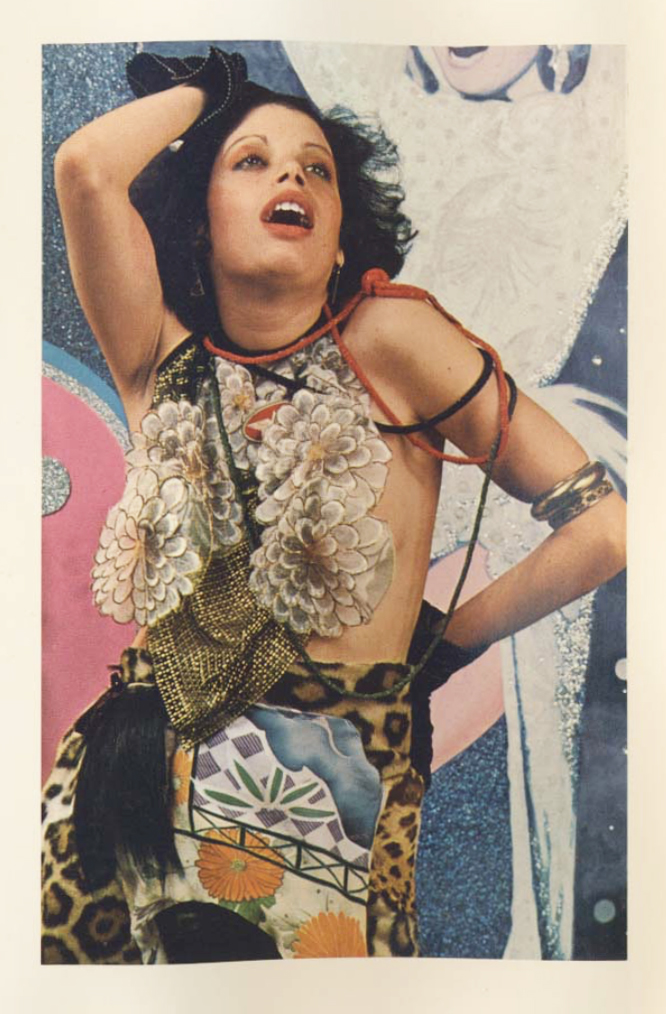
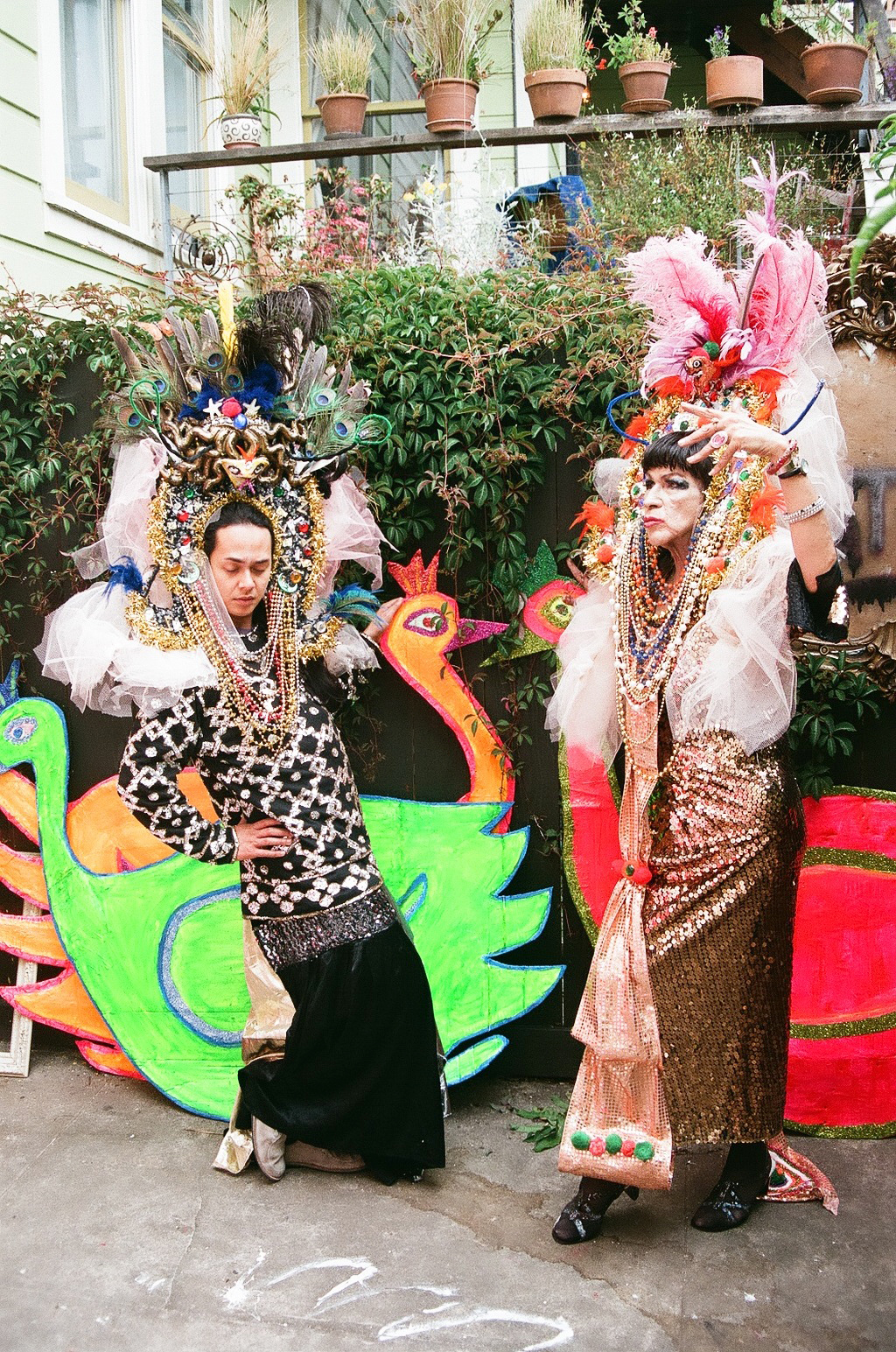
Left: Lizzie wearing Billy Bowers. Detail. from Native Funk and Flash, 1974
Right: Donna Personna (right) and friend wearing work by James Windsor aka Tahara. Back yard performance rehearsal. Photo Rik Lee Leipold
Radical Excess:
the Art and Life of Bill Bowers
Paulina Berczynski
I first heard about the artist Bill Bowers through his long-time friend Donna Personna, a trans-rights trailblazer who performed with San Francisco’s legendary Cockettes and participated in the Compton Cafeteria riot, one of the first recorded LGBT-related riots in United States history. I got Bill’s number and immediately started trying to get in touch so we could (to my mind) start gabbing about textiles and I could lay my hands on his work, which is decadent and heavy with ornamentation, collaged to the extreme, “just wild” as Bill would say about so many things from his past in our conversations to come.
 50s Porn jacket (left) and 70s Leather “Black and Blue” jacket. Photo Daniel Niccoletta. Queer-arts.org
50s Porn jacket (left) and 70s Leather “Black and Blue” jacket. Photo Daniel Niccoletta. Queer-arts.orgAlas, Bill had accidentally given me a wrong number, so a full year passed and when I finally tracked him down we were in the early throes of Covid-19 isolation. Bill and I started out planning clandestine meetings in the lobby of his San Francisco building, but in the end settled on a couple of phone calls in late March and early April, and I resigned myself to experiencing his work through the computer rather than in person for now.
Bill is a very gracious person, with a pleasant aloofness that I would guess comes from cramming enough experiences for two or three lifetimes into one. When we talked, he was in the process of sorting through thousands of negatives from decades of taking pictures and working as a photographer for gay newspapers and magazines. The Gay and Lesbian Historical Society had just contacted him hoping to add his work to their collection.
Bill is a very gracious person, with a pleasant aloofness that I would guess comes from cramming enough experiences for two or three lifetimes into one. When we talked, he was in the process of sorting through thousands of negatives from decades of taking pictures and working as a photographer for gay newspapers and magazines. The Gay and Lesbian Historical Society had just contacted him hoping to add his work to their collection.
PZB: Is it weird to go through all of this archival material?
BB: It is! It’s fun, It’s fun. It reminds me of so many things, it just brings back my memory… These things that I’m finding are just crazy. I worked for the Gay Times in the 1980s at the height of AIDS. They were only around for about a year but one of their things was if you worked for them you couldn’t mention the word AIDS or any photographs of depression or all this stuff. So i got to take pictures of funny things - at parties and you know, the Gay Olympics, a mix of this and that and everything… butt painting contests, mud wrestling, arm wrestling, tricycle races, all kinds of crazy things. So that’s what I’ve been working on about the last two months. I kind of put a stop to making jackets because I’m building up my photographic portfolio. I’ve been taking photographs since ’72.
PZB: And is it weird too because now we’re in this other virus time? I know it’s not the same at all…
![]()
BB: Yeah it’s totally different because in the 70s you know, nobody really worked at real jobs, they didn’t go to college. They ran here because they were gay and they didn’t have any place else to go. It was in the news across America that that’s where gays came and so during that time all the bath houses were open and sex and all this, it was just nuts. A lot of gay people my age say “God I never want to live there, because it was so good at one time and now it’s so different” but in some ways it’s still the same place. No place was as loose and wild as this, not even New York. It was really crazy in the ‘70s, but it’s become conservative.
BB: It is! It’s fun, It’s fun. It reminds me of so many things, it just brings back my memory… These things that I’m finding are just crazy. I worked for the Gay Times in the 1980s at the height of AIDS. They were only around for about a year but one of their things was if you worked for them you couldn’t mention the word AIDS or any photographs of depression or all this stuff. So i got to take pictures of funny things - at parties and you know, the Gay Olympics, a mix of this and that and everything… butt painting contests, mud wrestling, arm wrestling, tricycle races, all kinds of crazy things. So that’s what I’ve been working on about the last two months. I kind of put a stop to making jackets because I’m building up my photographic portfolio. I’ve been taking photographs since ’72.
PZB: And is it weird too because now we’re in this other virus time? I know it’s not the same at all…

Billy in his workroom holding Jayne Mansfield astro-turf jacket for Fiorucci, 1975. Photo Wendy Mukluk
BB: Yeah it’s totally different because in the 70s you know, nobody really worked at real jobs, they didn’t go to college. They ran here because they were gay and they didn’t have any place else to go. It was in the news across America that that’s where gays came and so during that time all the bath houses were open and sex and all this, it was just nuts. A lot of gay people my age say “God I never want to live there, because it was so good at one time and now it’s so different” but in some ways it’s still the same place. No place was as loose and wild as this, not even New York. It was really crazy in the ‘70s, but it’s become conservative.
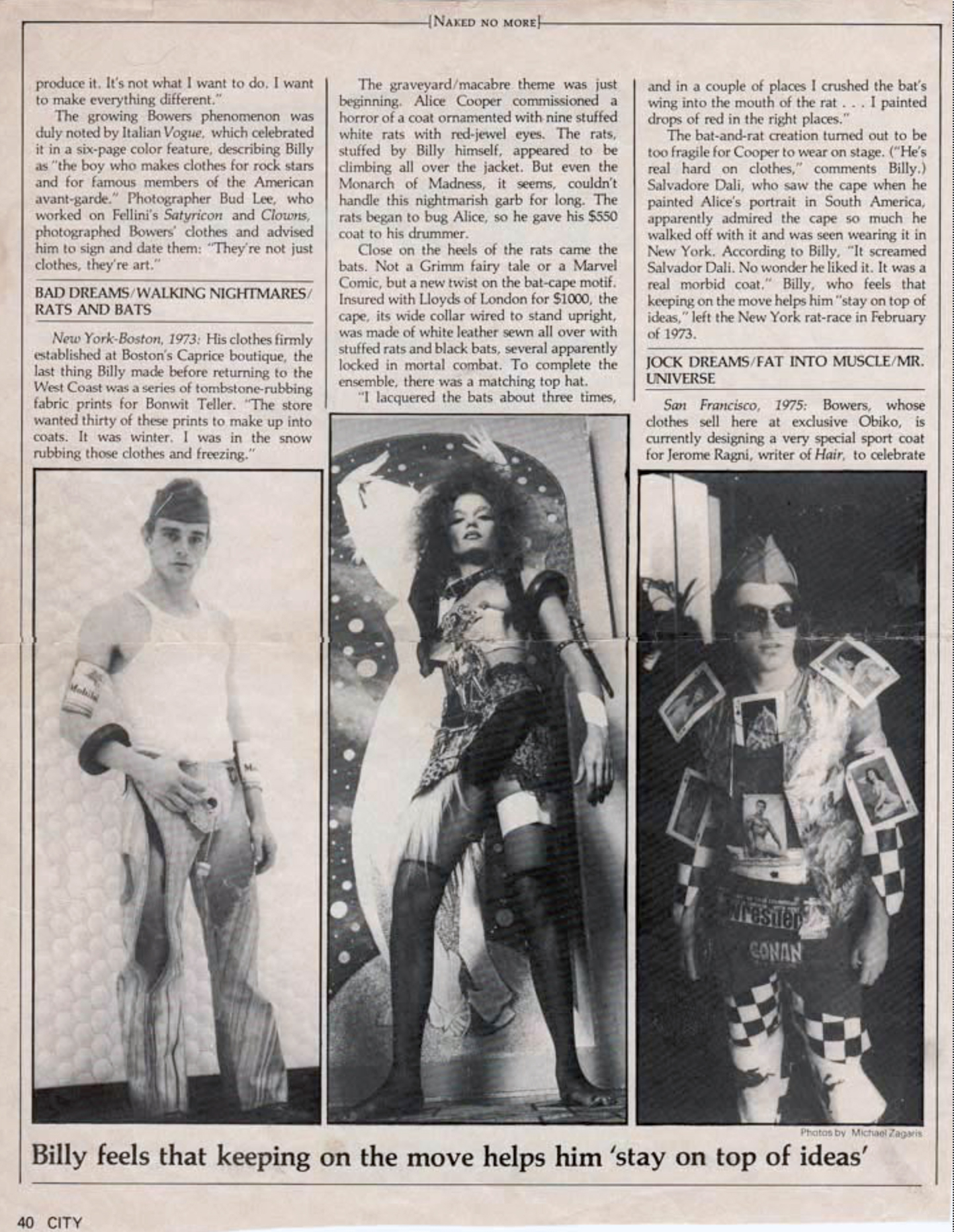
Billy Bowers’ Hot Dreams (excerpt) by Terry Cook. CITY magazine, San Francisco, March 1975. Queer-arts.org
Bill started making clothes in San Francisco around 1971, when he was in his early twenties, living in a commune and occasionally performing with SF’s legendary drag ensemble the Cockettes. At first Bill was making patchwork pants with leather, and painted boots. “People wore crazy clothes in those days. I couldn’t find crazy enough clothes, or elaborate enough clothes. I always wanted to out-do people. I didn’t know I was doing that but I guess I was.” He got into making the jackets that he’s known for through the Cockettes’ costumer Nicky Nichols, who made him some sewing patterns.
![]()
BB: I was working with the Cockettes doing clothes and costumes… when the Cockettes went to New York in ’72, I went to LA first, about a week before we left. This store on Hollywood Boulevard put five or six or eight of my jackets in their window. And then the next day they called me up… and said, well, the Rolling Stones want to see your clothes, and they want to see them where they’re staying.
![]()
![]()

Bill (second from right) photographed with actors wearing his jackets in Peter Berlin's film "That Boy" in San Francisco. 1970s. Photo Wendy Mukluk. SF Chronicle
BB: I was working with the Cockettes doing clothes and costumes… when the Cockettes went to New York in ’72, I went to LA first, about a week before we left. This store on Hollywood Boulevard put five or six or eight of my jackets in their window. And then the next day they called me up… and said, well, the Rolling Stones want to see your clothes, and they want to see them where they’re staying.
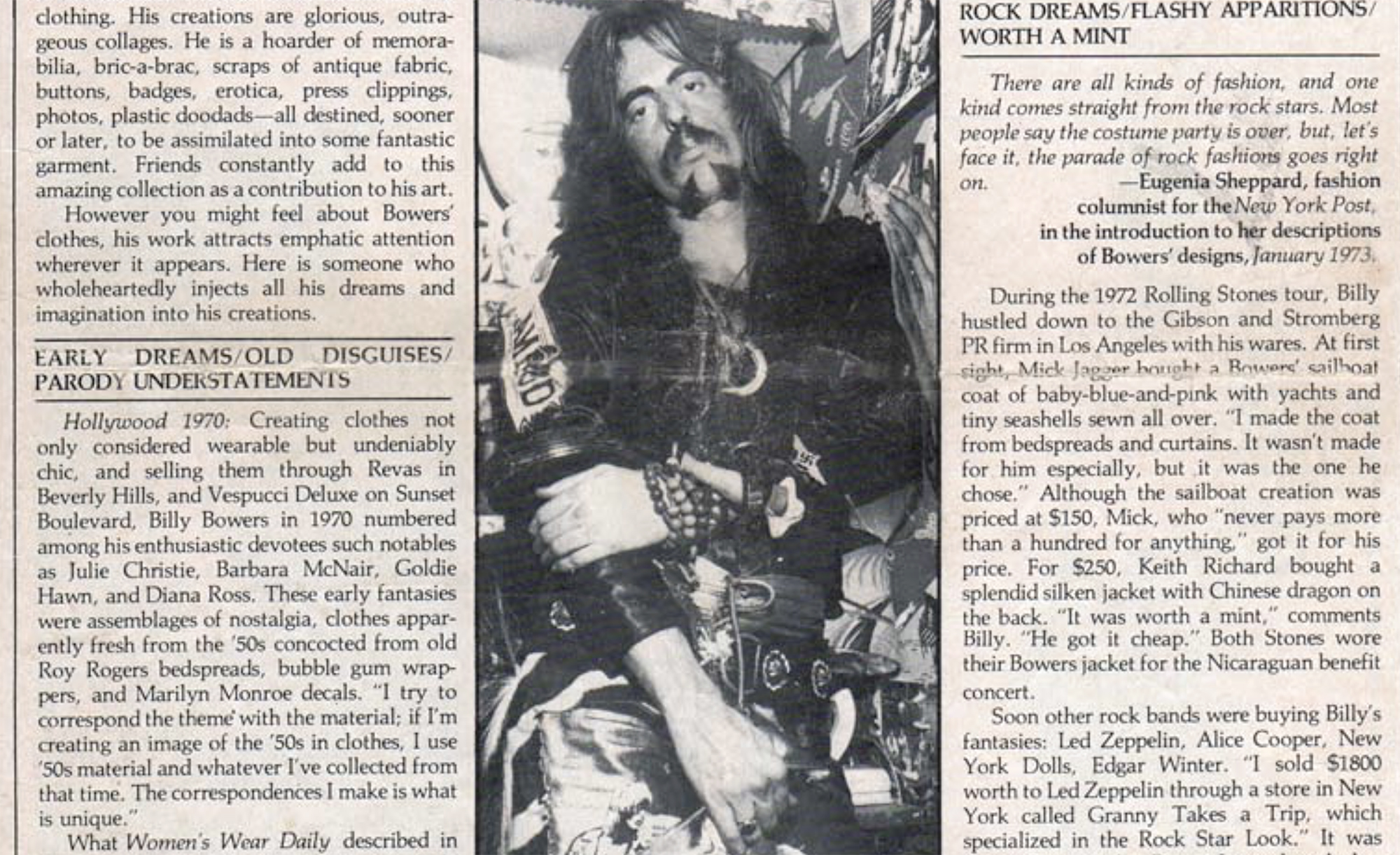
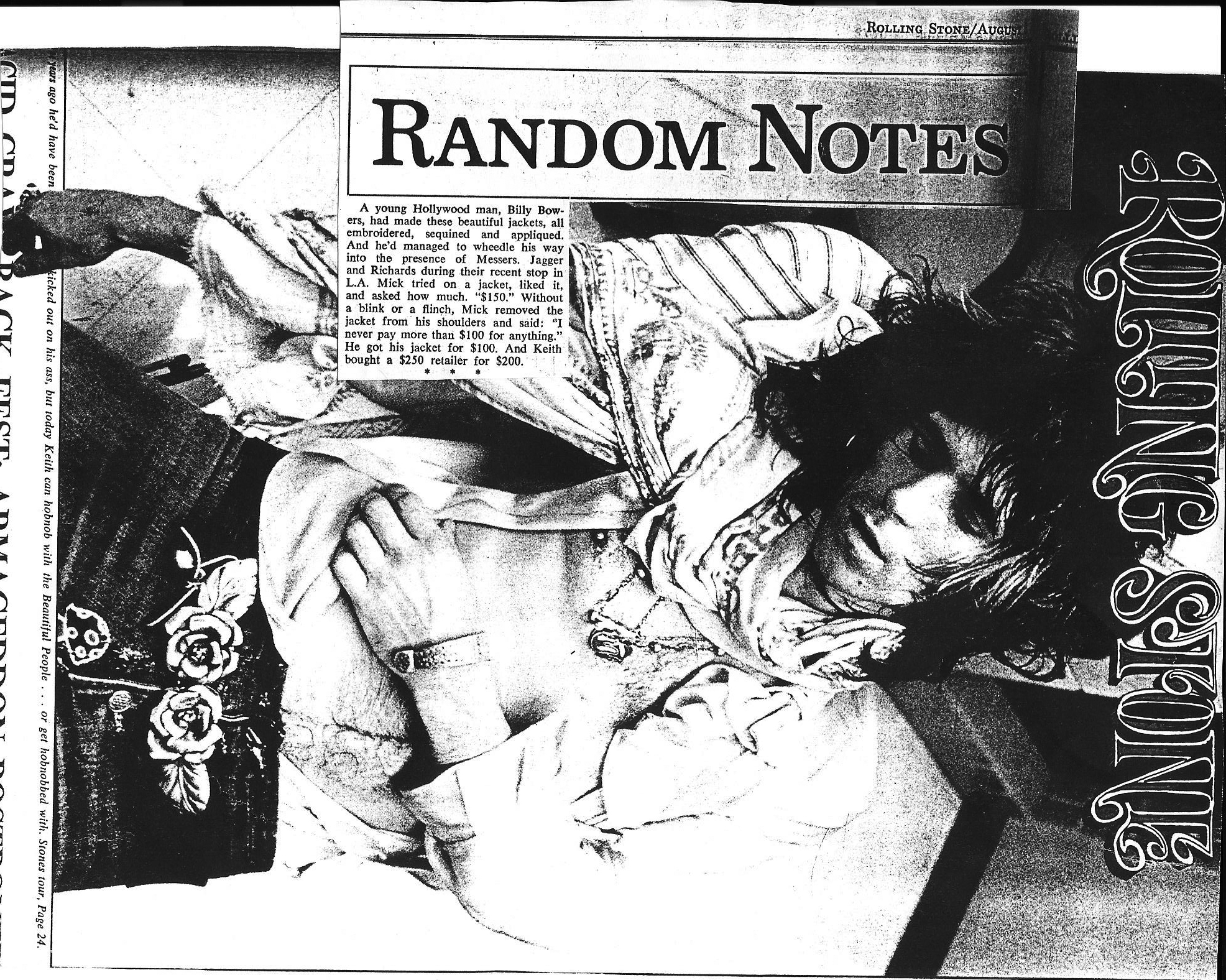
Rolling Stone Magazine
Bill met with the Stones at their hotel and sold six or seven unique pieces to Mick Jagger and Keith Richards. He flew to New York the next day with the Cockettes for what ended up being a disastrous theater run. The friend he was staying with there had a manager “who saw the clothes and immediately went into high gear trying to push my stuff. She was the one who connected me with Led Zeppelin, the New York Dolls, Alice Cooper...” Bill quickly got press in the “Random Notes” of Rolling Stone magazine, and soon a feature in Men’s Vogue Italy shot in Andy Warhol’s factory. Eventually Bill and several of his jackets ended up in the now iconic 70s style reference book Native Funk and Flash.
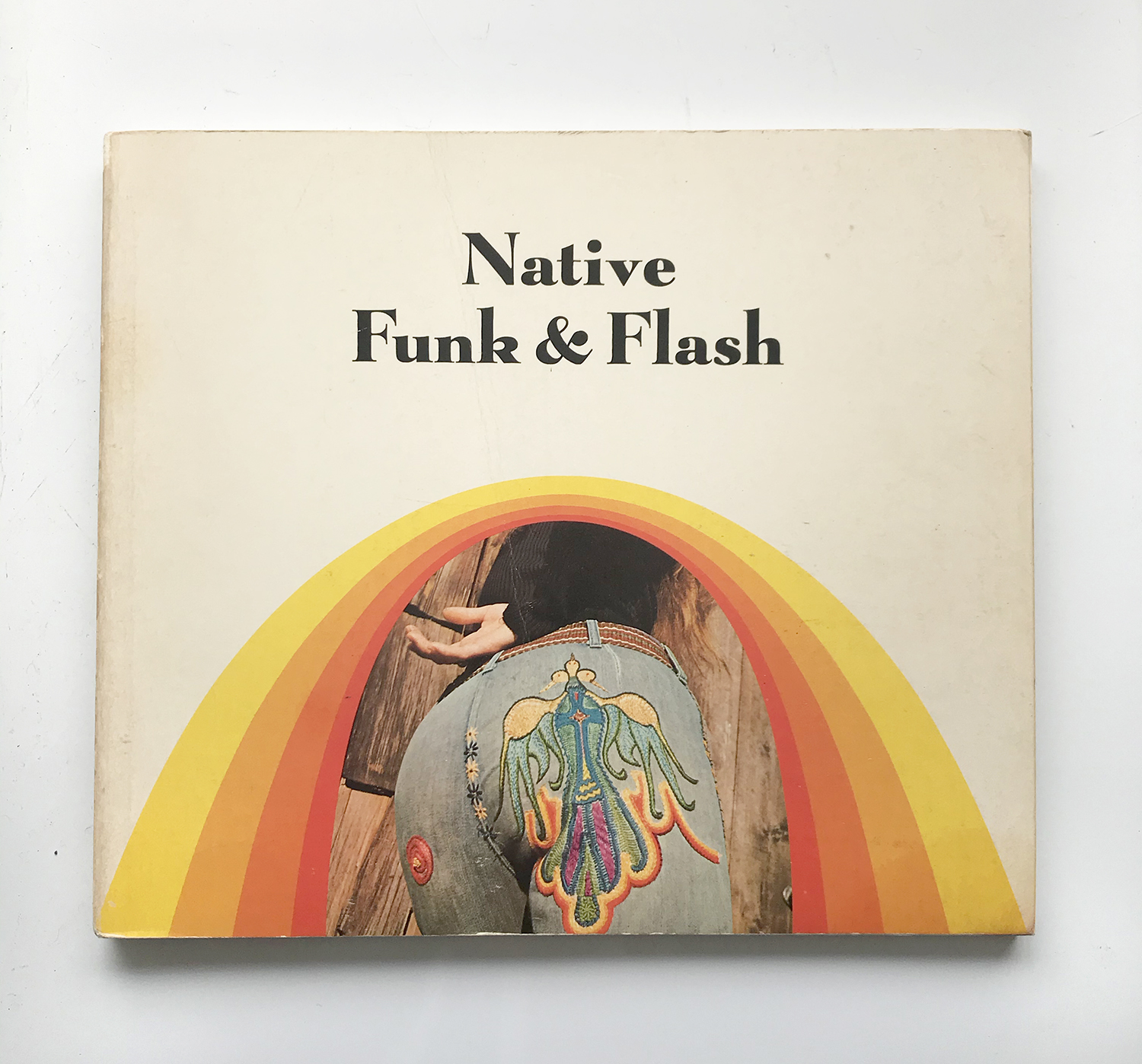
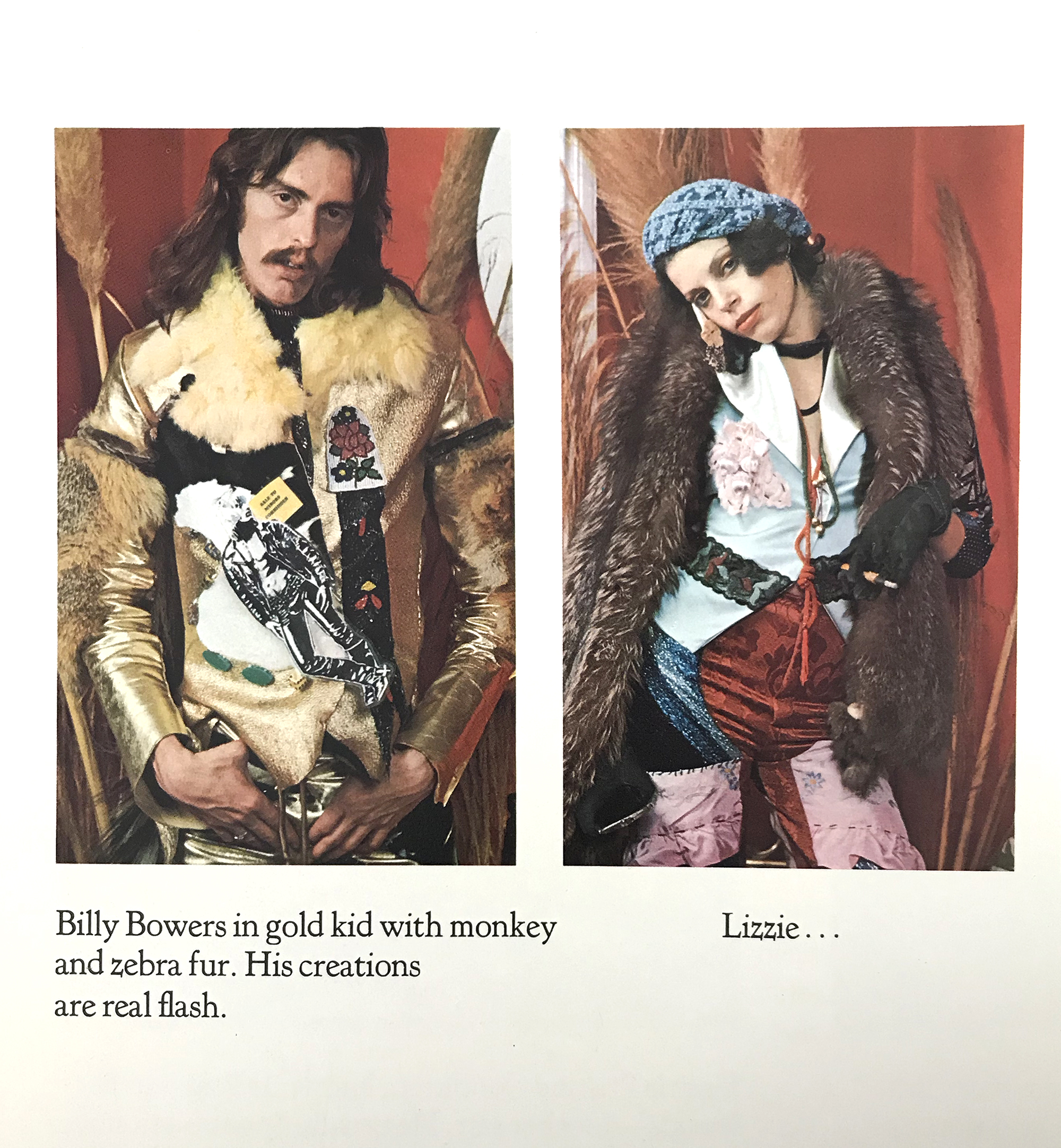
Native Funk and Flash. Cover, detail of interior. 1974
BB: There's this book that came out called Native Funk and Flash. All the people who were in that were living in communes and so it had all to do with communal living… The Cockettes had like five different communal houses and everybody helped everybody else. I learned a lot from the Cockettes and the Angels Of Light, which was the theater group after them… The Angels of Light were living together in communes of like 10, 30 people at a time so when I worked with them I was working with like 60, 90 people at a time. They had no money, and since they were from big communes, they had communal houses that just collected clothes. Other ones, just jewelry. They all were on welfare, and their entire checks went to glitter and rags and glues.
![]()
In my commune, the Mukluk Manor, we had about 15 people and when we would go grocery shopping en mass or go do laundry down into the Castro, we would all wear formals [dresses]. We would all wear formals just to go have coffee. But we weren't the only ones. There were several communes that did that. It was all fun.
![]()
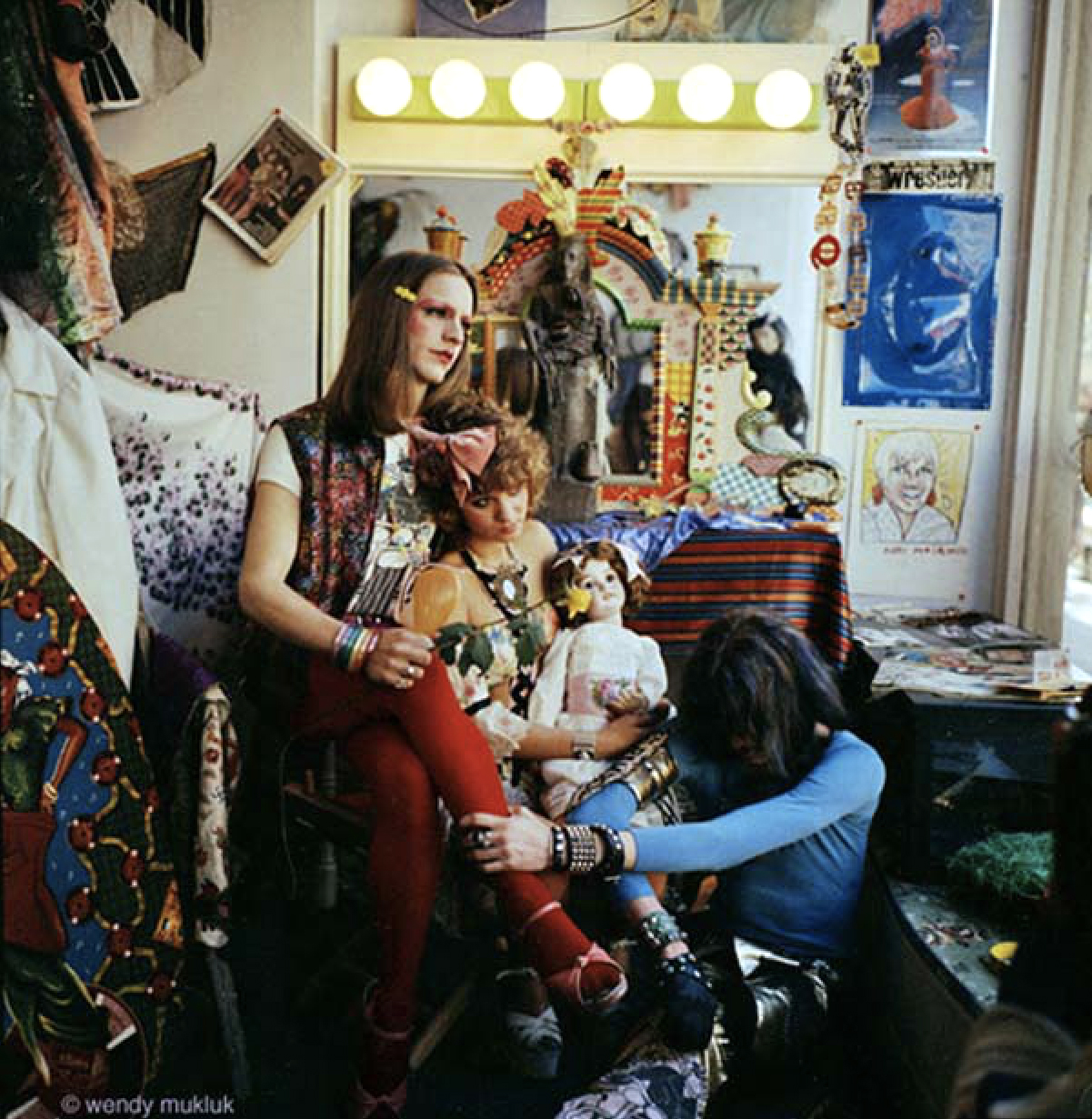
Prissy, Q.P. Dahl, and Billy. 1974. The Mad Mystical Merry Mukluks. Photo Wendy Mukluk
In my commune, the Mukluk Manor, we had about 15 people and when we would go grocery shopping en mass or go do laundry down into the Castro, we would all wear formals [dresses]. We would all wear formals just to go have coffee. But we weren't the only ones. There were several communes that did that. It was all fun.
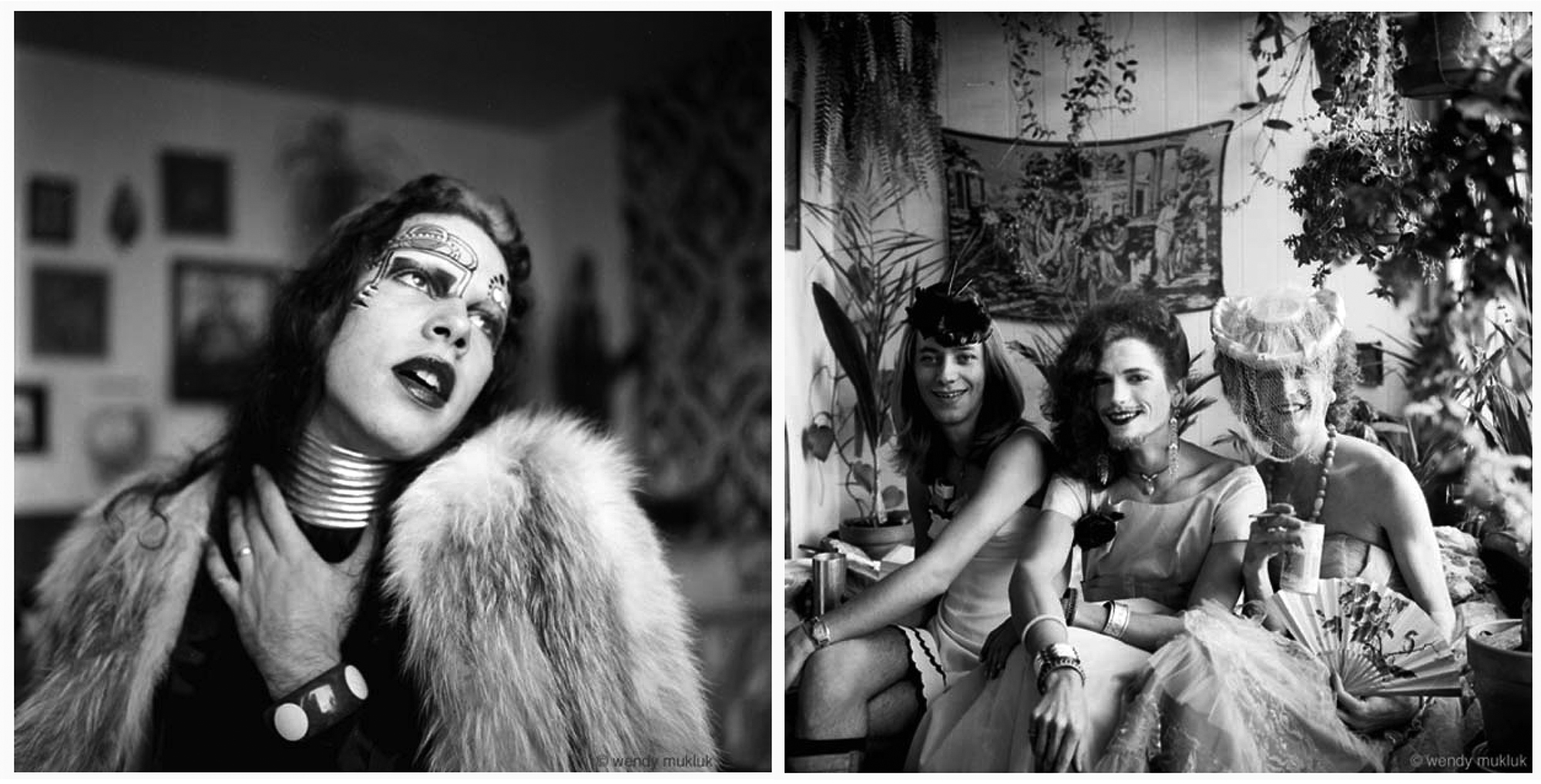
More of the The Mad Mystical Merry Mukluks. Photo Wendy Mukluk
PZB: So when you think about it now, these things that were maybe just fun at the time, they did lay the foundations for cultural change and so it was radical action even though it may not have seemed like it at the time, you know what I mean?
BB: Yeah. Well nowadays people don't live in communes and everyone has to work and they don't have a lot of time on their hands. But then, you know, we had an eight bedroom, nine bedroom house, and the whole entire rent was only $300. So our rent was like $35 a month. I don't even know where we got the money, but we had a lot of time… It all seemed normal, and we were really all innocent in the 70s. I mean, I didn't even ever think about myself being gay.
![]()
About 10 years ago there was this person that put out two books all about the 30s in Germany before Hitler, and the whole theater idea of wearing clothes, and performances. It was like, God, that's my life. I must've been there at that time. ‘Cause it was all like Cabaret, the movie, it was like the Angels or the Cockettes. So that whole time period really interested me. I wish I had the name of the books but of course I’ve cut them up. In Berlin at that time, in Paris and all that, the war had happened and so a lot of people had less money and they were just trying to have a good time. it just involved a lot of, you know, desperate people who had no money.
BB: Yeah. Well nowadays people don't live in communes and everyone has to work and they don't have a lot of time on their hands. But then, you know, we had an eight bedroom, nine bedroom house, and the whole entire rent was only $300. So our rent was like $35 a month. I don't even know where we got the money, but we had a lot of time… It all seemed normal, and we were really all innocent in the 70s. I mean, I didn't even ever think about myself being gay.
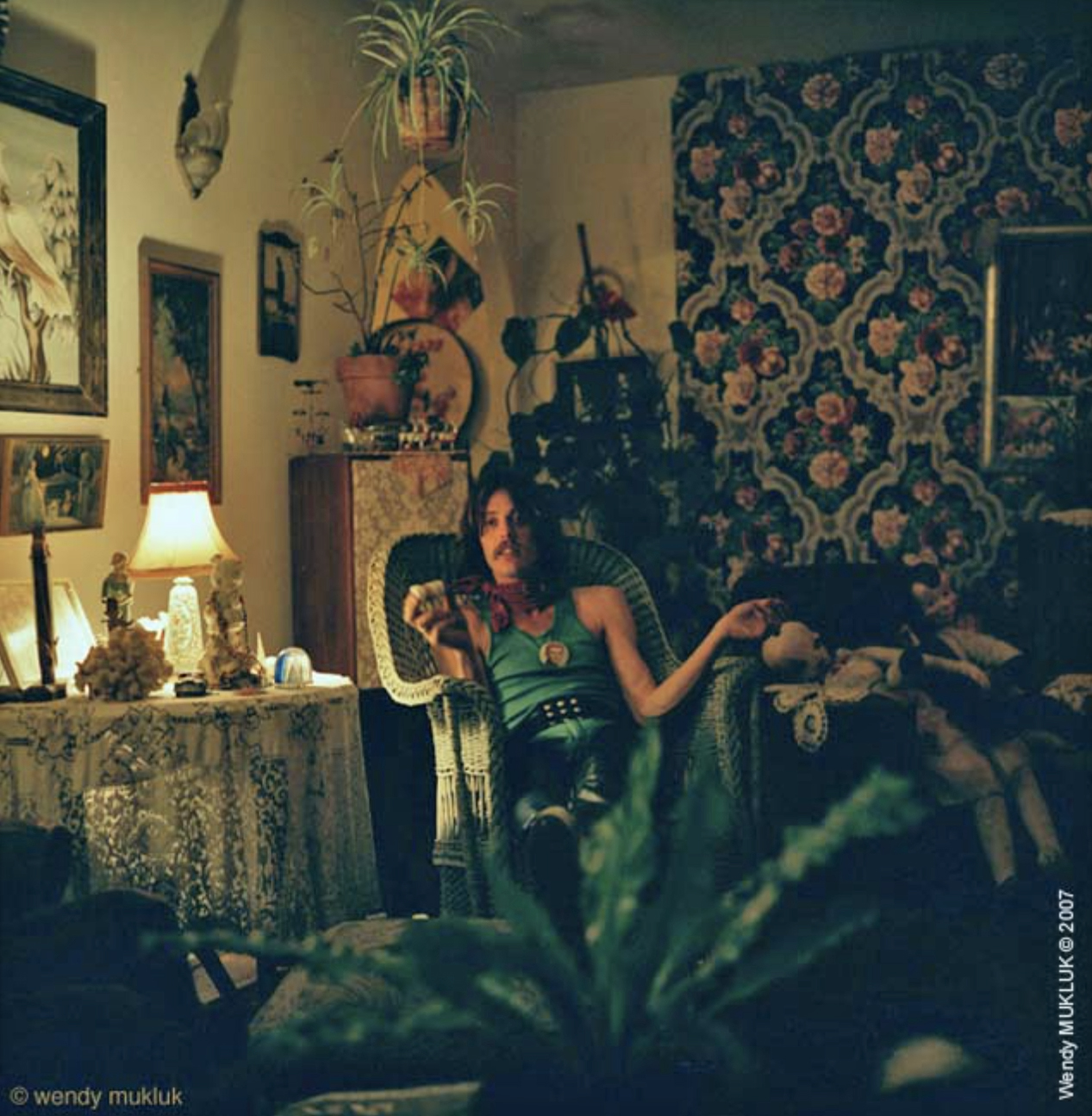
Billy at home, Mukluk Manor. Upper Market, San Francisco. December 24 1974. Photo Wendy Mukluk
About 10 years ago there was this person that put out two books all about the 30s in Germany before Hitler, and the whole theater idea of wearing clothes, and performances. It was like, God, that's my life. I must've been there at that time. ‘Cause it was all like Cabaret, the movie, it was like the Angels or the Cockettes. So that whole time period really interested me. I wish I had the name of the books but of course I’ve cut them up. In Berlin at that time, in Paris and all that, the war had happened and so a lot of people had less money and they were just trying to have a good time. it just involved a lot of, you know, desperate people who had no money.
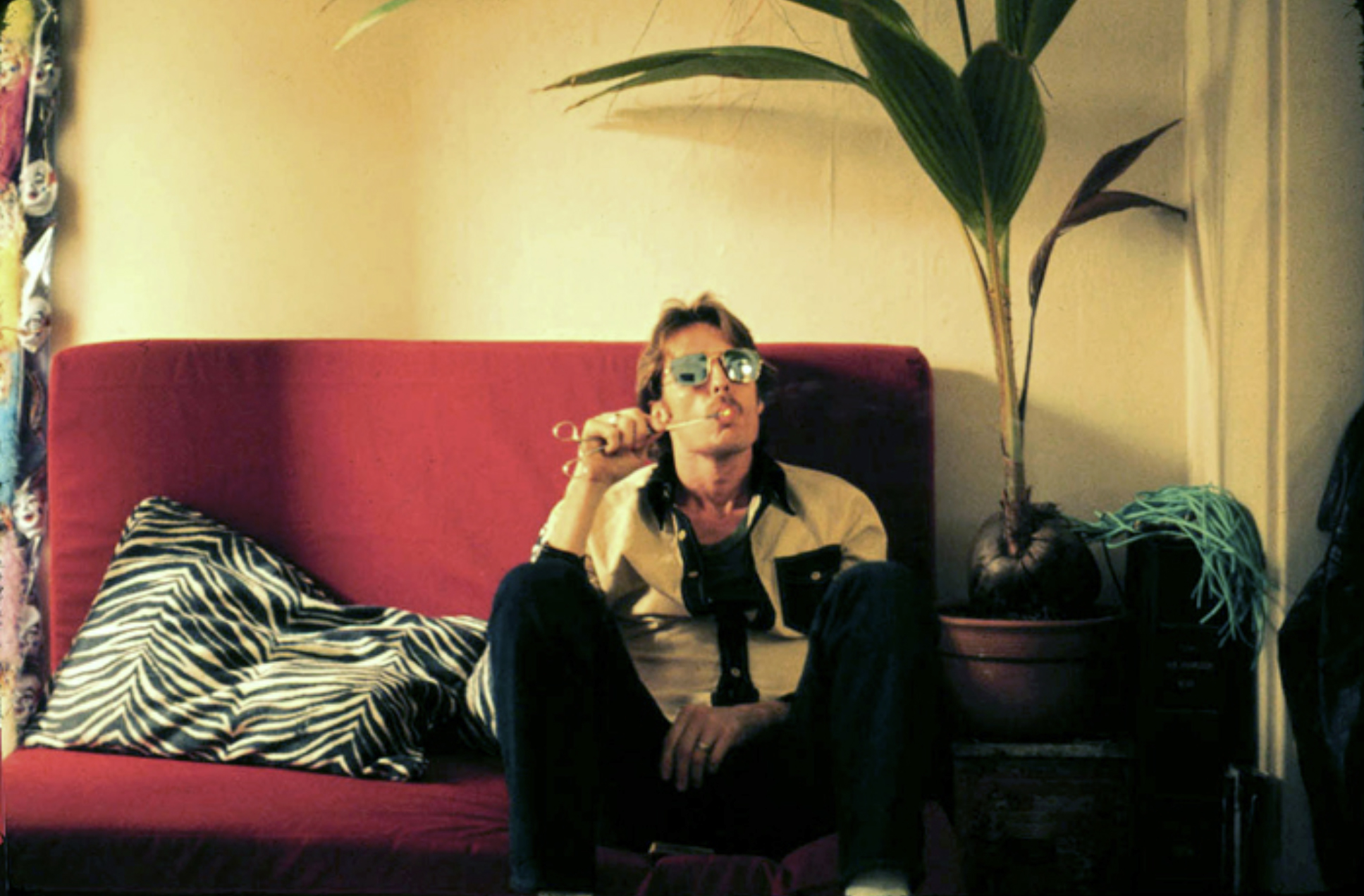
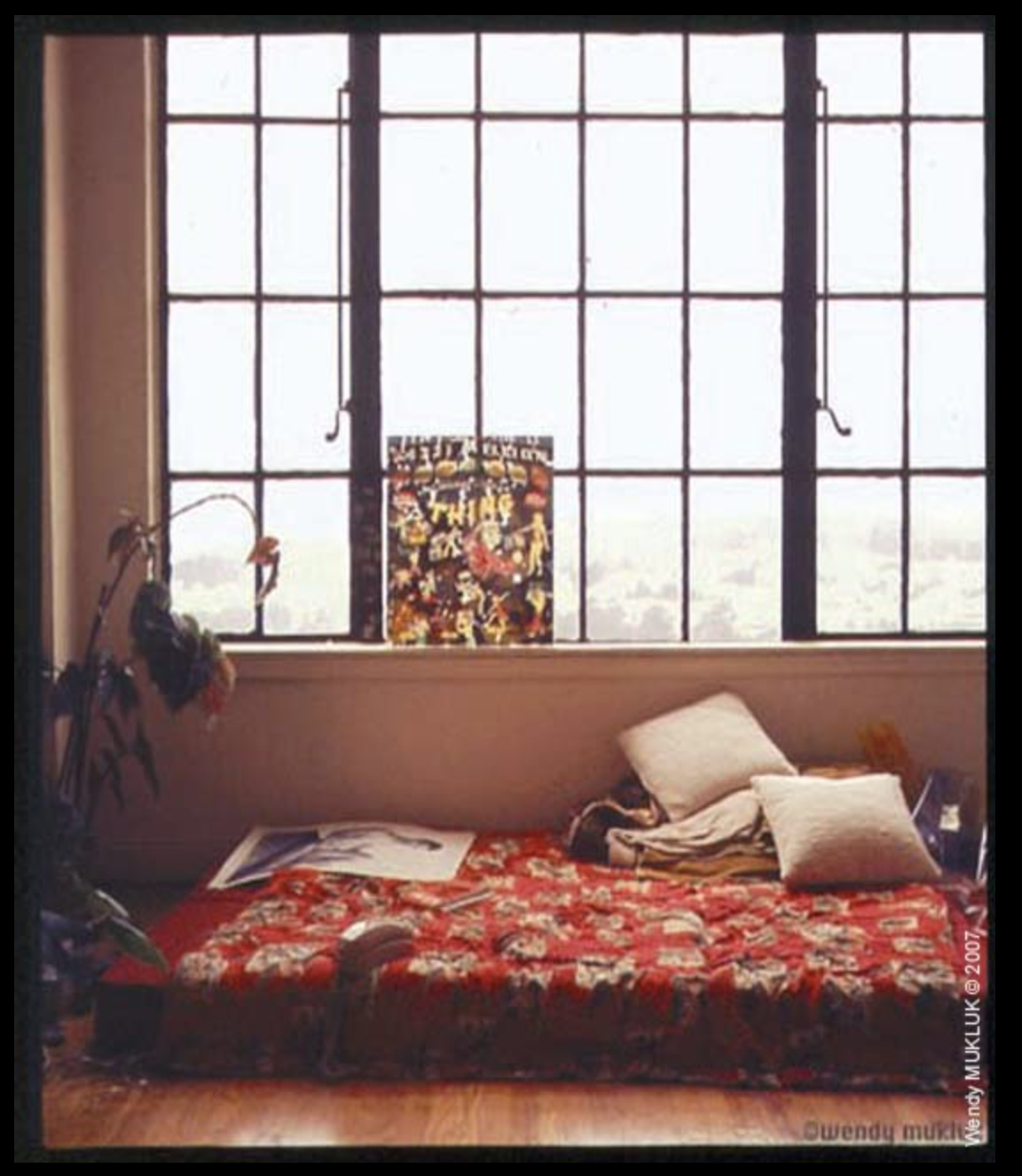

Left: Billy toking a Joint, Church St. 1976 Center: Billy’s Room, Near Buena Vista Park, 1977
Right: Clown Ladder Wall Hanging, 1978. All Wendy Mukluk
I asked Bill about where he acquired some of the materials for his early clothes and textile works- “I’ll tell you the truth I used to go shoplifting. For leather and other things. We all had big bags. We’d go to the flea market in Oakland and work in groups to steal clothes and materials and jewels and things.”
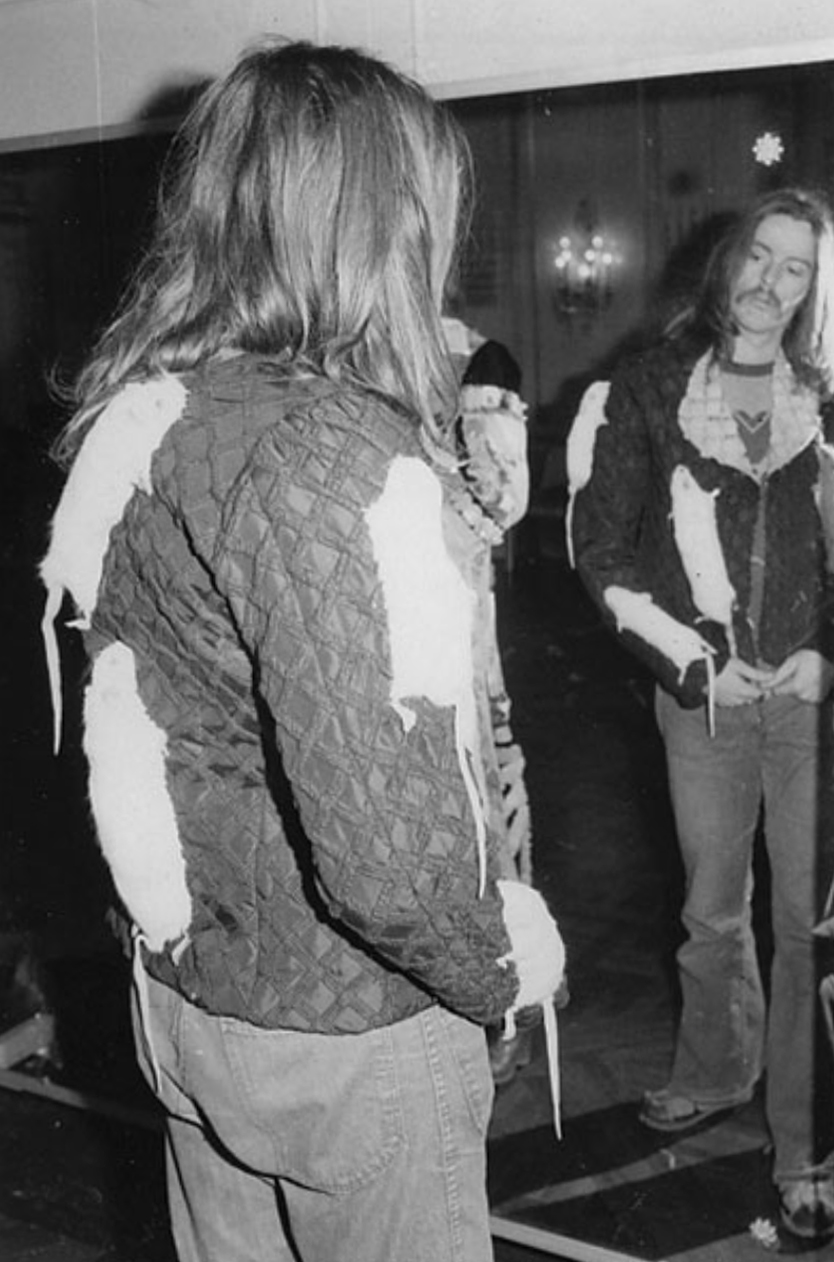

Image 1: Billy wearing rat coat commissioned by Alice Cooper, 1973, Queer-Arts.org, photographer unknown
Image 2: Alice Cooper wearing Bill Bowers Albino Rat Jacket. Bill also made a cape with bats in their mouths for Mr. Cooper, which was supposedly stolen by Salvador Dali. Bill Bowers Art, Facebook
San Francisco’s wilder days are almost-certainly behind us, but it’s been inspiring to see an echo from 70s-era clothing experimentation pop up in my own community. In doing my research for this article I was struck to come across a jacket Bill made that was covered in sewn-on white rats. The form was strangely familiar to me because a great friend (and current SF resident) who had not seen Bill’s work has been making rat sweaters for her instagram shop for some time. Oddly enough she also shares Bill’s love for Anna Nicole Smith’s TV show.
BB “I was stuck to it”
Though Bill doesn’t remember making the jacket in this photograph, He told me about a rat-covered cape he made for Alice Cooper:
BB: I was selling clothes to rock stars because my manager would get a hold of some, and I was working for Alice Cooper. First I made a dollar bill jacket and pants out of clear plastic. I put $150 one dollar bills sealed in the jacket Then he had a tour... and I made a white leather cape and top hat with stuffed white rats eating bats. What we did was Barbara my manager got the white rat skins from the Boston medical school; you know what I mean like a taxidermy. And then I stuffed them with cotton and put rhinestone red eyes and sewed them up. They had to be taxidermied otherwise if you rubbed the fur of the rat or animal it would come off, so that made it wearable. And we got the bats from the same college. And then I would paint red like blood on the rats mouths. It was like 20 rats eating 20 bats on the cape. The bats were really fragile.
In the 1980s, Bill left San Francisco and stopped making clothes for over a decade, living first in Key West and focusing on his photography, then ending up for a few years in New Orleans enjoying the bars (which never closed) and photographing events like Gay Mardi Gras and Southern Decadence.

Photo by Bill Bowers, 1985. Queer-arts.org
BB: I moved there by accident. I was moving back to San Francisco and we stopped in New Orleans to take a break because we were on a Greyhound bus. I was going to stay for three days to a week and I ended up staying for 4 years.
PZB: New Orleans is such an interesting place, there’s such a weird dark energy there
BB: Right, so they came up with all of these really crazy costumes. They had a lot of costumes that were deformity costumes where they would make themselves look like they had 3 heads, or 12 dicks, or 18 tits and just craziness. Everything’s overdone, exaggerated… The costumes are just bizarro. there’s Nothing else like it- they don’t really dress up as women or females, they’re more like something out of a dream. They’re influenced by the Indians [of South Florida], and that had a lot to do with their costumes.
Bill moved back to San Francisco to deal with health issues arising from HIV, becoming one of the first subjects in a protease inhibitor trial, the treatment now widely used to treat HIV/AIDS. He now takes lots of pills daily, but has an undetectable viral load.
BB: I started making clothes again in 93, and those are the ones that went to the [Oakland Museum of California]. Then I started doing wall hangings because I could get more information on a wall hanging than I could on a jacket. It’s a lot less expensive to do a wall hanging. That's one reason, and I can get more photographs on there, and tell the story easier on a big flat surface. It just matters how much material I have about the subject. Whether it goes to a jacket or a wall hanging.
Bill started making jackets from scratch, but soon moved to sourcing LEVI’s jackets to use as bases for his work. “What I do is that the seam that’s under the arm, that goes down to the wrist, I take that apart so it’s flat, then I sew it together after I collage it.”

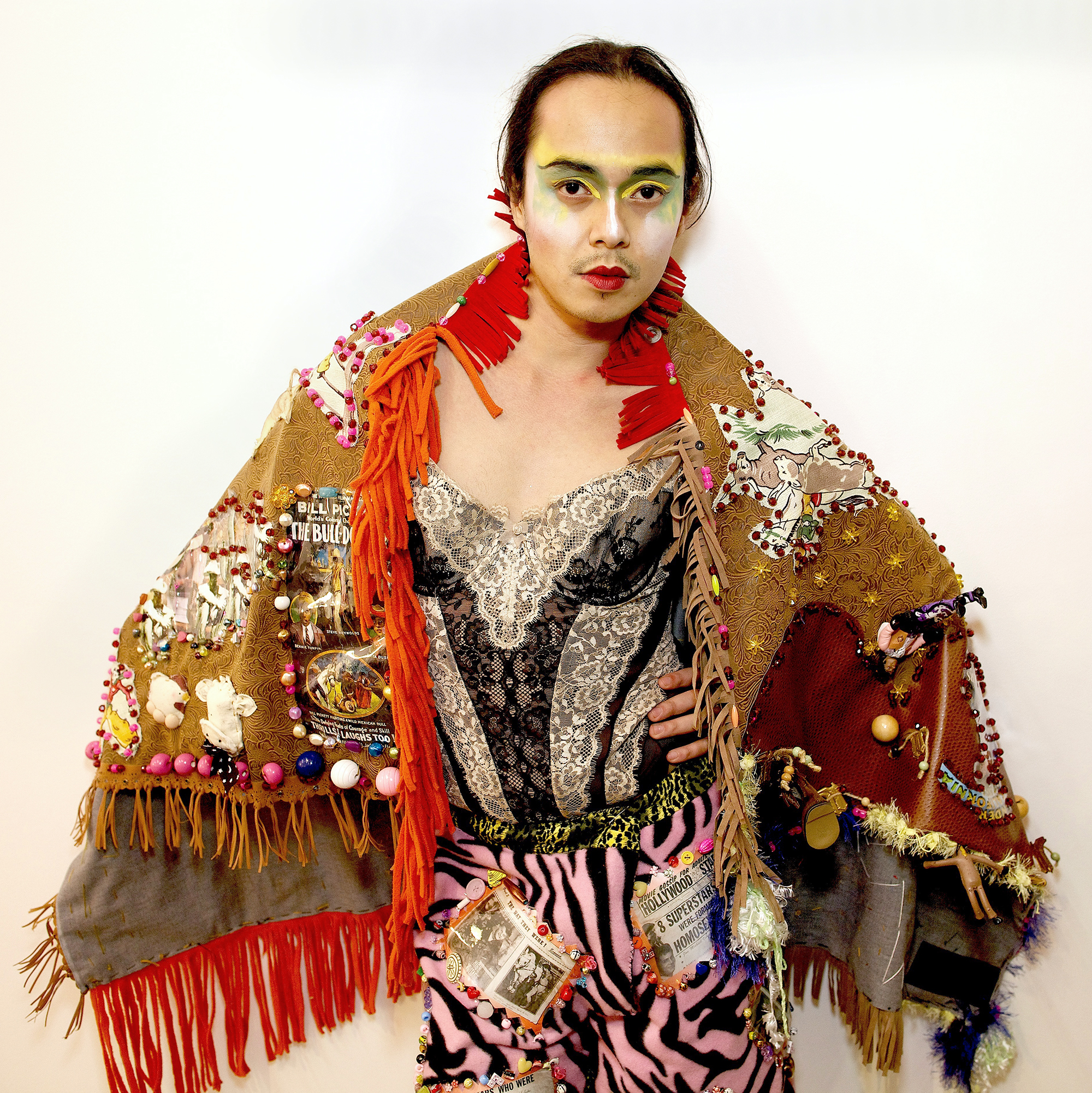
Two of Bill’s creations. Left: Petalo Suave
Right: Jean Franco Pilas Photos Bill Bowers
Right: Jean Franco Pilas Photos Bill Bowers
Usually Bill works on one thematic piece at a time, but “some pieces that I start on, I might find a magazine or something and say, Oh, this will be good, but then I don't have anything else to go with it. So sometimes I’m working on like three pieces at a time. But somewhere eventually I run into the things I need. A lot of people help me. My good friends, if they know I’m working on something they might find it and send it to me. If I have all the materials it takes me about a week to make a jacket, because there’s a lot of hand sewing, two, three weeks maybe. A wall hanging is a week maybe, sometimes a day.” Bill has made jackets about everything from artists like Keith Haring and David Wojnarowicz, to larger than-life-celebrities, disasters and headlines from the news.
![]()
Twin Towers Jacket, Bill Bowers. Steven Wolf Gallery
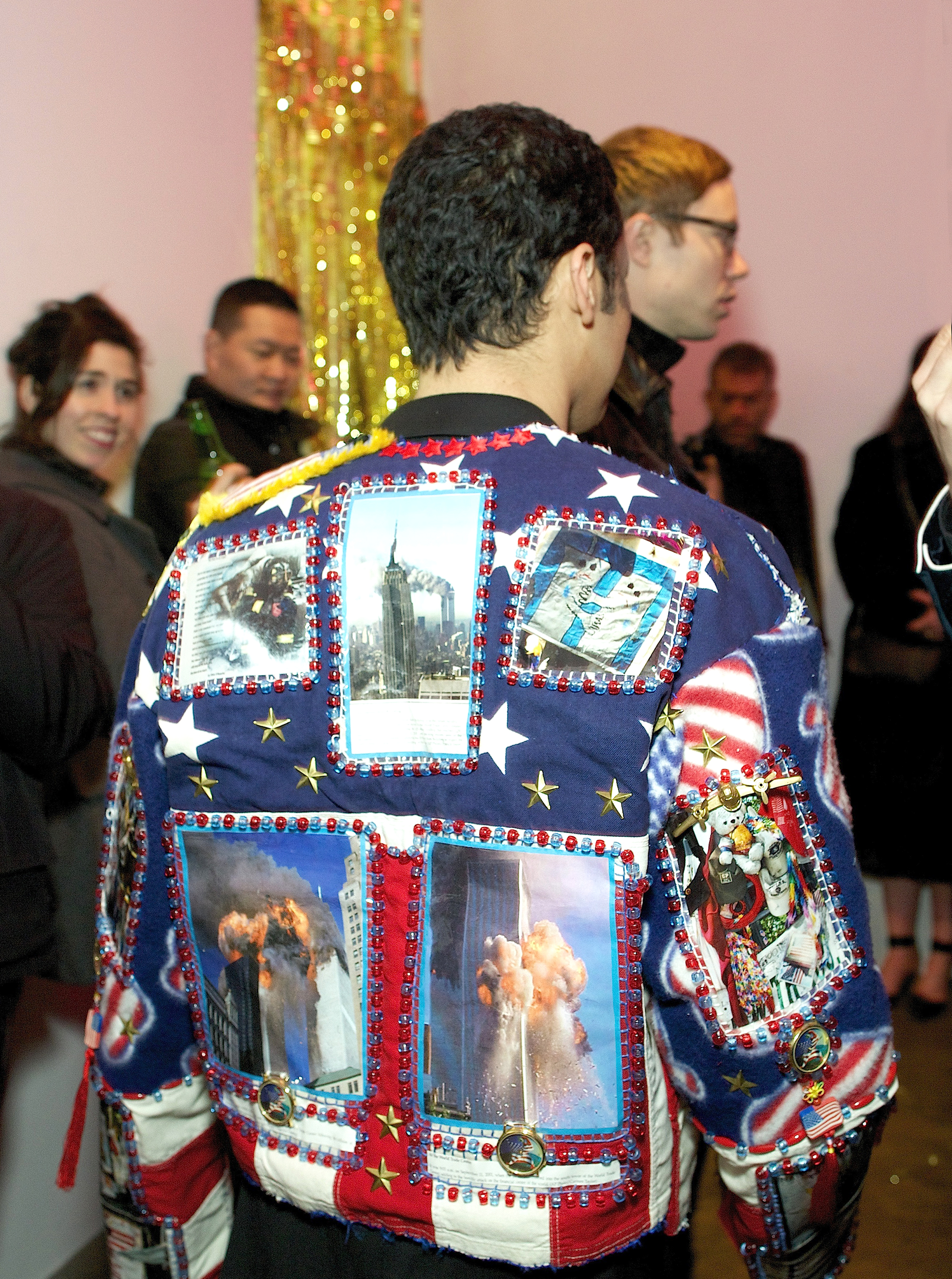
Twin Towers Jacket, Bill Bowers. Steven Wolf Gallery
BB: All my work has photographs or clippings from newspapers, like the World Trade Center bombing, Hurricane Katrina. And I would collect newsreel photographs and magazine photographs and real photographs that I took, and then I put them under plastic. The plastic you see like in restaurants on tabletops. You can buy it by the yard, so that's what I do. And then I sew it. And each time I sew a stitch I add a bead or a button, anything that has a hole in it.
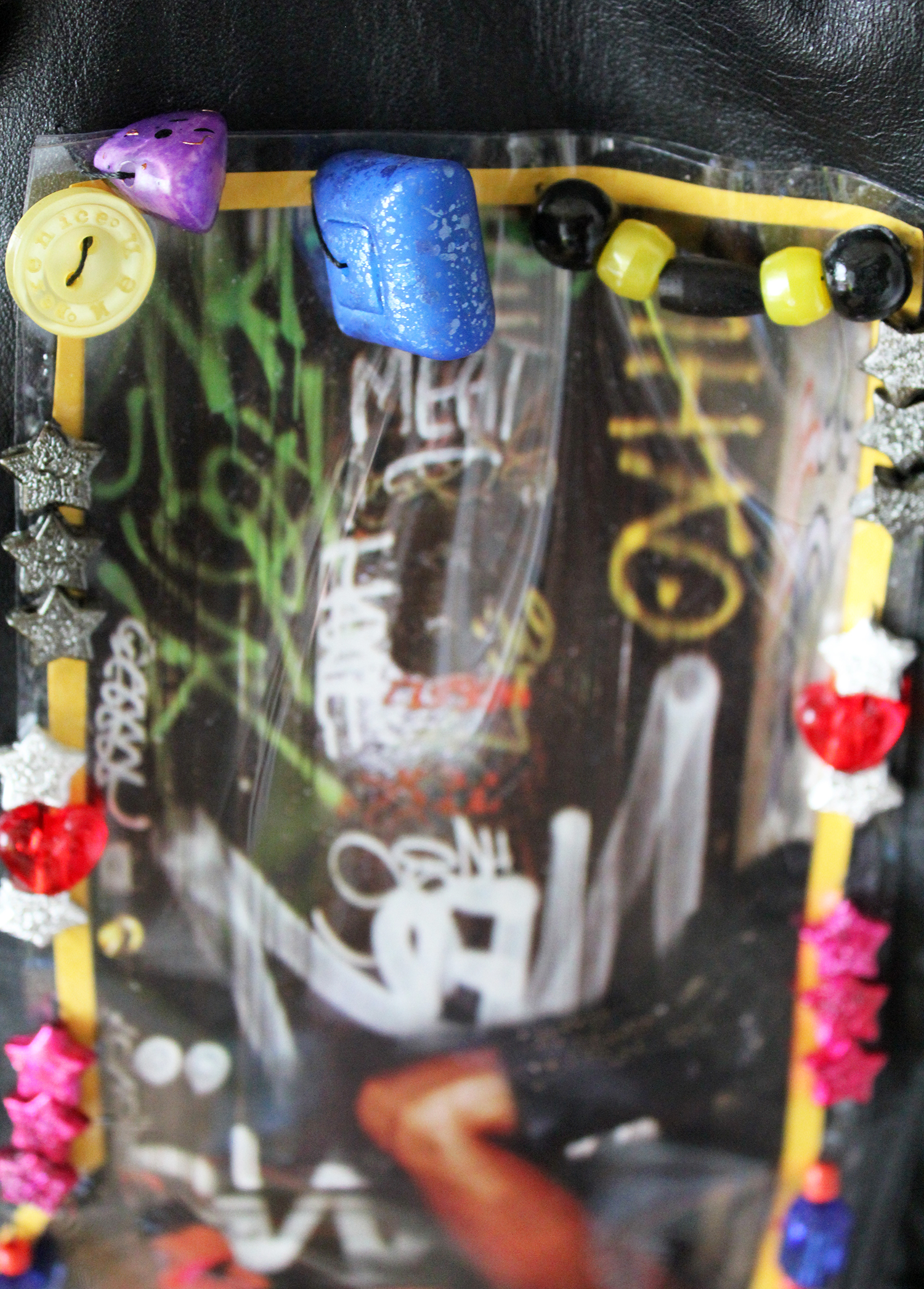

Top: Jacket detail. Bottom: Wall hanging detail. Photos Rik Lee Leipold
I try to show people things - like people in the Midwest don’t go to things like the Folsom Street Fair and see all these people in leather, so it’s like educating people through my work.”
All of Bill’s work is hand-sewn in his home studio. He doesn’t own a sewing machine.
BB: I work on the floor or on my bed. I never work on things hanging up. I just hang them up after they're finished. Well sometimes when I'm only half-finished, I’ll hang it up to look at it. Or I'll leave it on the floor below my bed and I'll look at it throughout the rest of the day and night and I can see where something else is needed or where I'm going. So I guess if I had a huge studio with a big table, it would be great to have a big work table.
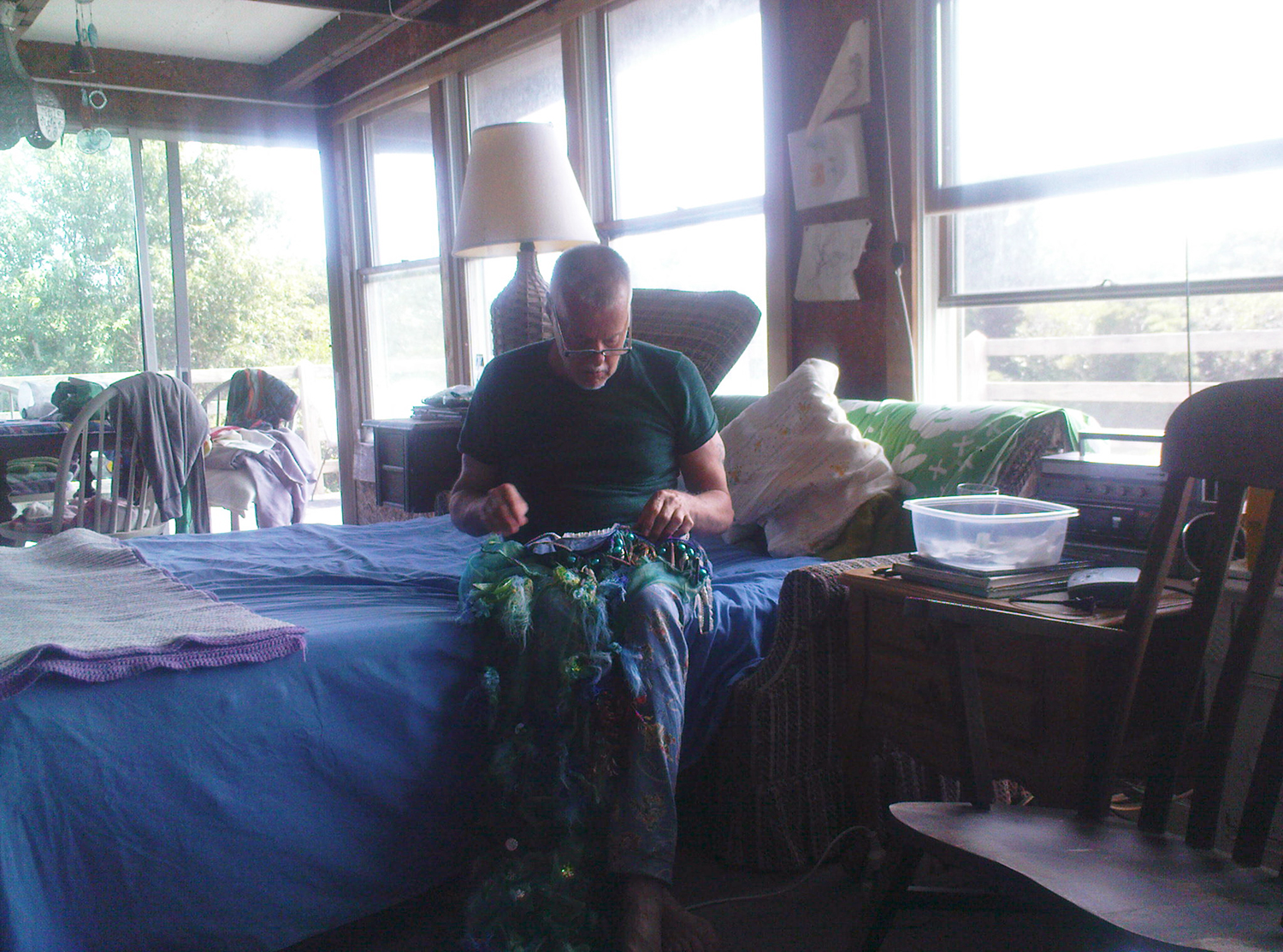
Bill working on a piece for a music video, from his archive.
Nowadays, Bill rarely exhibits his work, citing the difficulty in “hustling galleries” while being computer-illiterate. He sells jackets and hangings mostly to admirers and friends, and some to museum collections and the like.
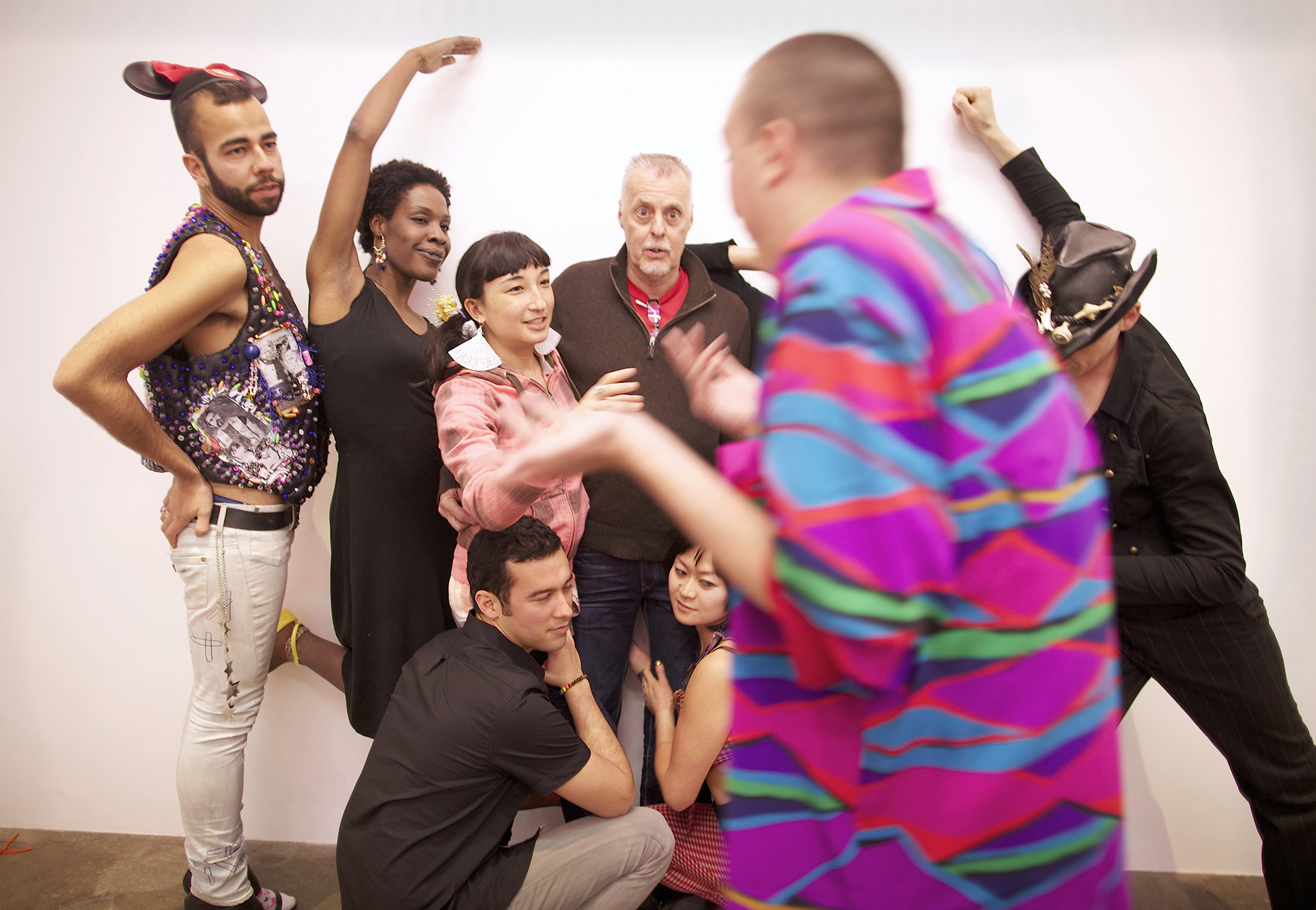
Event photograph with Bill Bowers, Diego Gomez, Ben-Wa, Vain Hein, and friends.
BB: It never was really a money thing. Not that I didn't want it. It was what I like to do. We were working with the Cockettes and I started working with the Thrill Peddlers, and then going to New York so many times I met all these theater people and… I was just an artist, it just came natural. And you learn so much from other artists.
Creative experimentation and radical nonchalance towards dominant cultural paradigms seem to come naturally for Bill, who these days sits bored, sorting through his thousands of epic memories, planning to spend all of the money he’s saved during social distrancing on going out as soon as the stay at home order is revised. It’s been such a gift to dig through his digital archives, generously shared with me by his friend Rik Lee, and find windows into his past-lives online, where Bill pops up unexpectedly as Billy, the 20-something commune dweller, smoking joints or staring back at the camera, all attitude and bohemia.
![]()
This time with Bill has opened up a bit of nostalgia for my own early days in San Francisco, where I moved in the late 90s with few plans and no money to form some very fun memories and the most lasting relationships of my life. It’s also been a reminder to cultivate and celebrate my own penchant for gaudy textiles, absurdist parties, and the little corners of weird that make the world feel a little less suffocating. I look forward to meeting Bill soon, to finally see his work in person and see what other stories spill out while we’re talking through the details. I can’t wait to learn more about the self-defined cultures and communities of the 70s, doled out in anecdotes by a man who has built so much of his life and practice around the pursuit of fun.
![]()

Billy and Buzzy in Buzzy’s room, 1977. Photo Wendy Mukluk
This time with Bill has opened up a bit of nostalgia for my own early days in San Francisco, where I moved in the late 90s with few plans and no money to form some very fun memories and the most lasting relationships of my life. It’s also been a reminder to cultivate and celebrate my own penchant for gaudy textiles, absurdist parties, and the little corners of weird that make the world feel a little less suffocating. I look forward to meeting Bill soon, to finally see his work in person and see what other stories spill out while we’re talking through the details. I can’t wait to learn more about the self-defined cultures and communities of the 70s, doled out in anecdotes by a man who has built so much of his life and practice around the pursuit of fun.

Bill Bowers wearing the Baby jacket. Queer-arts.org